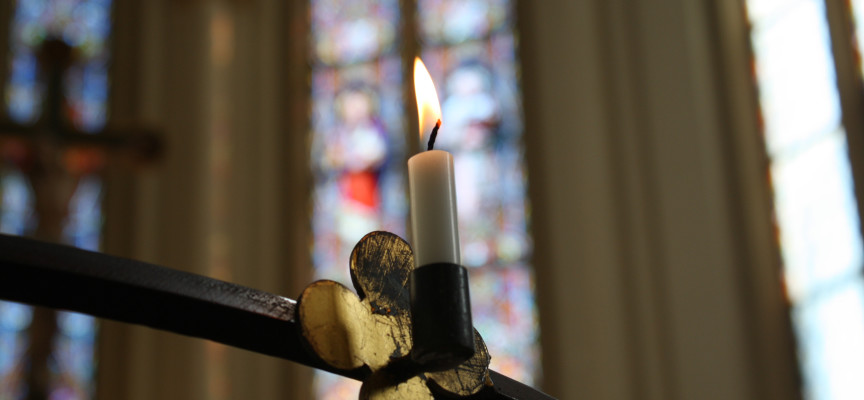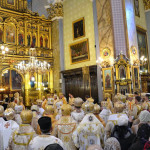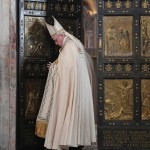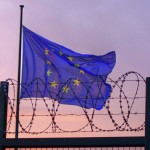Nearly half a century ago, as the Second Vatican Council drew to a close, the bishops of Poland took the initiative to send a letter to their brethren of the German episcopate. In their message, they forgave and asked for forgiveness, and they “greeted and thanked their German Protestant brothers” for their commitment to “find solutions to the difficulties” that had divided the two peoples. This example explains the various possible points of contact between the ecumenical way and the European construction: the burden of history, the severity of divisions, and the need for forgiveness.
Unity and Diversity
The European Union’s motto, “United in Diversity,” could also apply to the ecumenical quest. This is how theologian Bruno Chenu explains it: “The Christian paradox is that unity grows with diversity and diversity enriches unity”. Differentiated consensus, at the heart of the work involving theologians of different Churches, is another expression of this paradox.
In the New Testament, this unity in diversity is expressed for example with the word koinonia, which can be translated as “communion” or “fraternal life”. It refers to the desire for mutual sharing, pooling of resources, or the call to “live together under the same roof”. In the process of European integration brought forward by its founding fathers, as Cardinal Lustiger recalled, “Coal and steel were the Ruhr region and weapons. Their sharing by France and Germany meant a reconciliation of enemies who were separated by ruthless hatred”.
The two meanings of the word “fraternity”
Another aspect is related to the meaning of the word “fraternity”. In the early days of Christianity, two words with distinct meanings were used for fraternal relations. The first, philadelphia, described fraternal love, in the sense of a shared value, an ideal to be put into practice. The second, adelphôtès, was used in reference to the community. This double meaning can still be found in Latin languages: “fraternity” can apply to a feeling or a group.
A shame though, that since the Latin word Fraternitas merges the two meanings, most of us have forgotten that in the early days of Christianity “fraternity” was a name of the Church! If you apply the same distinction to European integration, one could say that an effort we should make to recognize each other as brother Countries is moving on to the awareness that we all belong to the same fraternal communion. This does not exclude diversity, but it opens a common horizon.
Reflection of a universal family
However in the ecumenical field, like in the case of the European ideal, the ultimate goal goes far beyond the borders of our communities. If believers care so much about moving towards their visible unity, it is because Jesus prayed for it: “I pray that all may be one […] so that the world may believe it was you who sent me” (John 17:21). As Pope Francis said recently, it is basically an issue of credibility: “Our proclamation and our testimony will be all the more credible as we will give the example by living in communion and in mutual love”.
In the same way, the historical process of European integration has a message to send even beyond the geographical boundaries of our continent. It is particularly important that Europe is open and supportive. This is what Br. Alois said at the end of December 2008: “Europe has finally opened an unprecedented period of peace in its history. The path it has covered arouses immense hope in other parts of the world. […] The construction of Europe finds its full meaning if the latter shows solidarity with the other continents and poorer peoples”.
Conclusion
In a world marked by so many disillusions, the European idea is already engraved in many young people. Today, boundaries certainly do not have the same meaning they had in the past. The hope brought about by the European unification evokes a future of rapprochement and reconciliation for the world. In this direction, the ecumenical efforts of Christians may be a sign of reconciliation in Europe. Hence the urgency of seeking this unity in the relations among believers and the Churches.
Il y a bientôt un demi-siècle, alors que le concile Vatican II approchait de son terme, les évêques de Pologne prirent l’initiative d’envoyer une lettre à leurs confrères de l’épiscopat allemand. Dans leur message, ils donnaient et demandaient le pardon et ils tenaient à “saluer et remercier les frères protestants allemands, qui se soucient eux aussi de “trouver des solutions aux difficultés” ayant divisé les deux peuples. Cet exemple éclaire plusieurs rapprochements possibles entre la démarche œcuménique et la construction européenne: le poids de l’Histoire, la gravité des divisions, la nécessité du pardon.
Unité et diversité
La devise de l’Union Européenne, “Unis dans la diversité”, pourrait aussi bien s’appliquer à la recherche œcuménique. Le théologien Bruno Chenu le résumait ainsi: “Le paradoxe chrétien est que l’unité grandit avec la diversité et que la diversité embellit l’unité”. Le consensus différencié, au cœur des travaux communs aux théologiens de différentes Églises, en est une autre expression.
Dans le Nouveau Testament, cette unité dans la diversité est exprimée par exemple par le mot koinônia, que l’on peut traduire par “communion” ou “vie fraternelle”. Il désigne le désir de partage réciproque, la mise en commun des ressources, l’appel à vivre “sous un même toit”. Or, dans la démarche des pères fondateurs de la construction européenne, comme le rappelait le cardinal Lustiger, “le charbon et l’acier, c’était la Ruhr et les armes; les mettre en commun entre la France et l’Allemagne, c’était réconcilier des ennemis séparés par des haines impitoyables”.
Les deux sens du mot “fraternité”
Un autre aspect de la question est lié au sens du mot “fraternité”. Dans les premiers temps du christianisme, deux mots existaient pour décrire les relations fraternelles, avec des sens bien distincts. Le premier, philadelphia, décrivait l’amour fraternel au sens d’une valeur partagée, d’un idéal à vivre. Le second, adelphôtès, était lui utilisé pour parler de la communauté elle-même. On trouve encore ce double sens dans les langues latines: “fraternité” peut correspondre à un sentiment ou à un groupe.
Il est très dommage toutefois que, le latin fraternitas ayant mêlé les deux significations, on ait oublié qu’aux premiers temps du christianisme “fraternité” était un nom de l’Église ! Si on applique la même distinction à l’intégration européenne, on pourrait dire que d’un effort à faire pour se reconnaître comme des pays frères, il conviendrait aujourd’hui de passer à la prise de conscience d’une appartenance réciproque, à une même communauté fraternelle. Celle-ci n’exclut pas la diversité, mais elle dégage un horizon d’attente commun.
Reflet d’une famille universelle
En matière œcuménique comme quant à l’idéal européen, il faut toutefois ajouter que le but ultime dépasse largement les frontières de nos propres communautés. Si les croyants ont à cœur d’avancer vers l’unité visible, c’est parce que Jésus priait ainsi: “Je prie pour que tous soient un […] pour que le monde croie que tu m’as envoyé” (Jean 17,21). Comme le pape François l’a affirmé récemment, c’est au fond une question de crédibilité: “notre annonce et notre témoignage seront d’autant plus crédibles que nous serons capables en premier de vivre en communion et de nous aimer”.
De même, le processus historique de la construction européenne a un message à faire valoir bien au-delà des limites géographiques du continent. Il est d’autant plus crucial que cette Europe soit ouverte et solidaire. C’est ce que frère Alois a exprimé, fin décembre 2008 : “L’Europe a réussi à ouvrir une période de paix sans précédent dans son histoire. Le chemin accompli éveille une immense espérance dans d’autres régions du monde. […] La construction de l’Europe ne trouve son sens plénier que si elle se montre solidaire avec les autres continents et les peuples les plus pauvres”.
Conclusion
Dans un monde marqué par beaucoup de désillusions, l’idée européenne est déjà ancrée chez beaucoup de jeunes. Les frontières n’ont sans doute plus le même sens aujourd’hui qu’hier. L’espérance ouverte par l’unification européenne renvoie à un avenir de rapprochement et de réconciliation pour le monde. En ce sens, les efforts œcuméniques des chrétiens peuvent être un signe de réconciliation en Europe. D’où l’urgence de chercher déjà cette unité dans les relations entre croyants et entre Églises.
Un’Europa della fraternità
Quasi mezzo secolo fa, mentre il Concilio Vaticano II si avvicinava alla conclusione, i vescovi della Polonia presero l’iniziativa d’inviare una lettera ai loro confratelli dell’episcopato tedesco. Nel loro messaggio, perdonavano e chiedevano perdono e desideravano “salutare e ringraziare i fratelli protestanti tedeschi” per il loro impegno nel “trovare soluzioni alle difficoltà” che avevano diviso i due popoli. Questo esempio spiega i diversi possibili punti di contatto tra il cammino ecumenico e la costruzione europea: il peso della storia, la gravità delle divisioni, la necessità del perdono.
Unità e diversità
Il motto dell’Unione europea, “Uniti nella diversità”, potrebbe anche applicarsi alla ricerca ecumenica. Il teologo Bruno Chenu lo spiega così: “Il paradosso cristiano è che l’unità cresce con la diversità e la diversità impreziosisce l’unità”. Il consenso differenziato, al cuore dei lavori tra teologi di Chiese diverse, ne è un’altra espressione.
Nel Nuovo Testamento, questa unità nella diversità è espressa ad esempio con la parola koinônia, che può essere tradotta come “comunione” o “vita fraterna”. Si riferisce al desiderio di condivisione reciproca, della messa in comune delle risorse, della chiamata a vivere “sotto lo stesso tetto”. Nel processo dei padri fondatori della costruzione europea, come ha ricordato il cardinale Lustiger, “il carbone e l’acciaio erano la Ruhr e le armi; condividerle tra la Francia e la Germania significava riconciliare nemici separati da odi spietati”.
I due significati della parola “fraternità”
Un altro aspetto è legato al significato della parola “fraternità”. Nei primi tempi del cristianesimo, esistevano due parole per descrivere le relazioni fraterne con significati ben distinti. Il primo, philadelphia, descriveva l’amore fraterno, nel senso di un valore condiviso, di un ideale da vivere. Il secondo, adelphôtès, era usato per parlare della comunità stessa. Questo doppio significato si trova ancora nelle lingue latine: “fraternità” può essere un sentimento o un gruppo.
È però un peccato, che poiché il latino fraternitas mischia i due significati, ci si sia dimenticati che nei primi tempi del cristianesimo “fratellanza” era un nome della Chiesa! Se si applica la stessa distinzione per l’integrazione europea, si potrebbe dire che uno sforzo da fare per riconoscersi come Paesi fratelli dovrebbe essere oggi di passare alla consapevolezza della reciproca appartenenza a una stessa comunione fraterna. Ciò non esclude la diversità, ma apre un orizzonte comune.
Riflesso di una famiglia universale
In ambito ecumenico, come per l’ideale europeo, bisogna tuttavia aggiungere che l’obiettivo finale supera ampiamente i confini delle nostre comunità. Se i credenti hanno a cuore di avanzare verso l’unità visibile, è perché Gesù ha pregato: “Prego che tutti siano una cosa sola […] perché il mondo creda che tu mi hai mandato” (Giovanni 17,21). Come ha detto papa Francesco di recente, è fondamentalmente una questione di credibilità: “Il nostro annuncio e la nostra testimonianza saranno tanto più credibili quanto noi saremo in grado per primi di vivere in comunione e amarci”.
Allo stesso modo, il processo storico d’integrazione europea ha un messaggio da affermare al di là dei confini geografici del continente. È particolarmente importante che l’Europa sia aperta e solidale. Questo è ciò che frère Alois affermò a fine dicembre 2008: “L’Europa è riuscita ad aprire un periodo di pace senza precedenti nella sua storia. Il percorso compiuto suscita un’immensa speranza in altre parti del mondo. […] La costruzione europea trova il suo pieno significato se si mostra solidale con gli altri continenti e i popoli più poveri”.
Conclusione
In un mondo segnato da molte delusioni, l’idea europea è già radicata in molti giovani. I confini oggi non hanno certamente lo stesso significato che avevano in passato. La speranza suscitata dall’unificazione europea rimanda a un futuro di avvicinamento e di riconciliazione per il mondo. In questo senso, gli sforzi ecumenici dei cristiani possono essere un segno di riconciliazione in Europa. Da qui l’urgenza di cercare già questa unità nelle relazioni tra i credenti e tra le Chiese.
Latest posts by Frere Benoît (see all)
- Taizé back to Prague - 9 dicembre 2014
- A Europe of fraternity - 27 ottobre 2014











